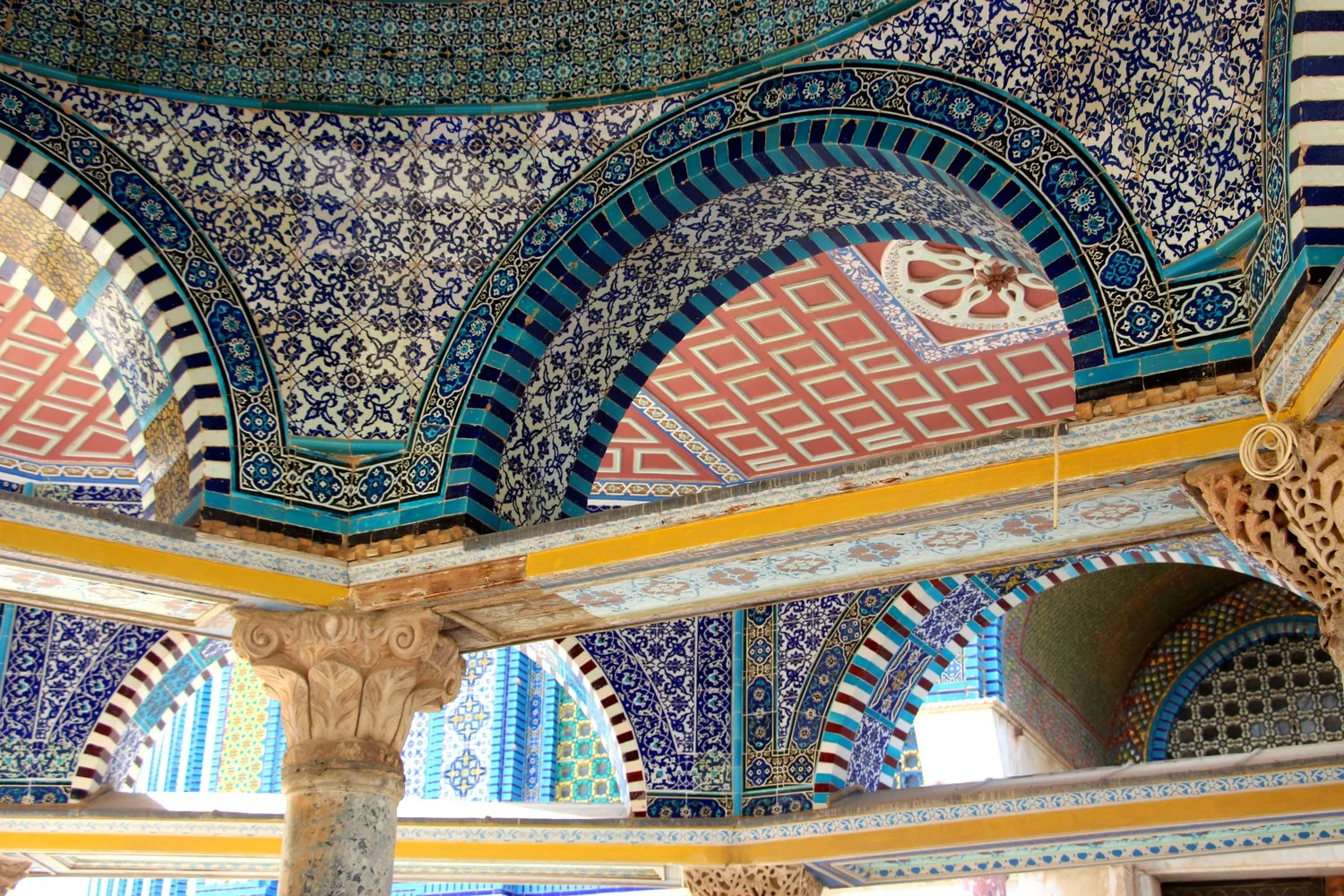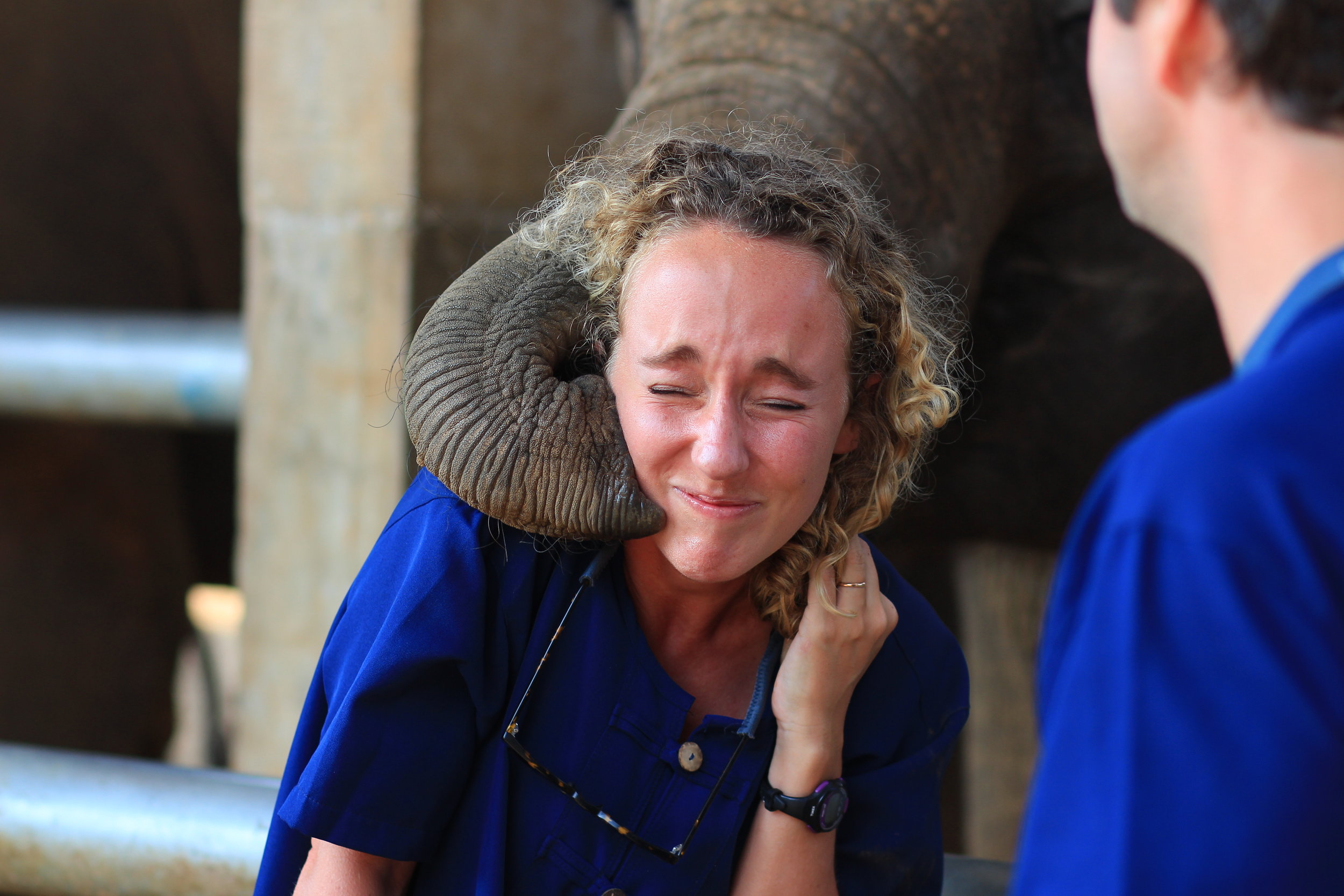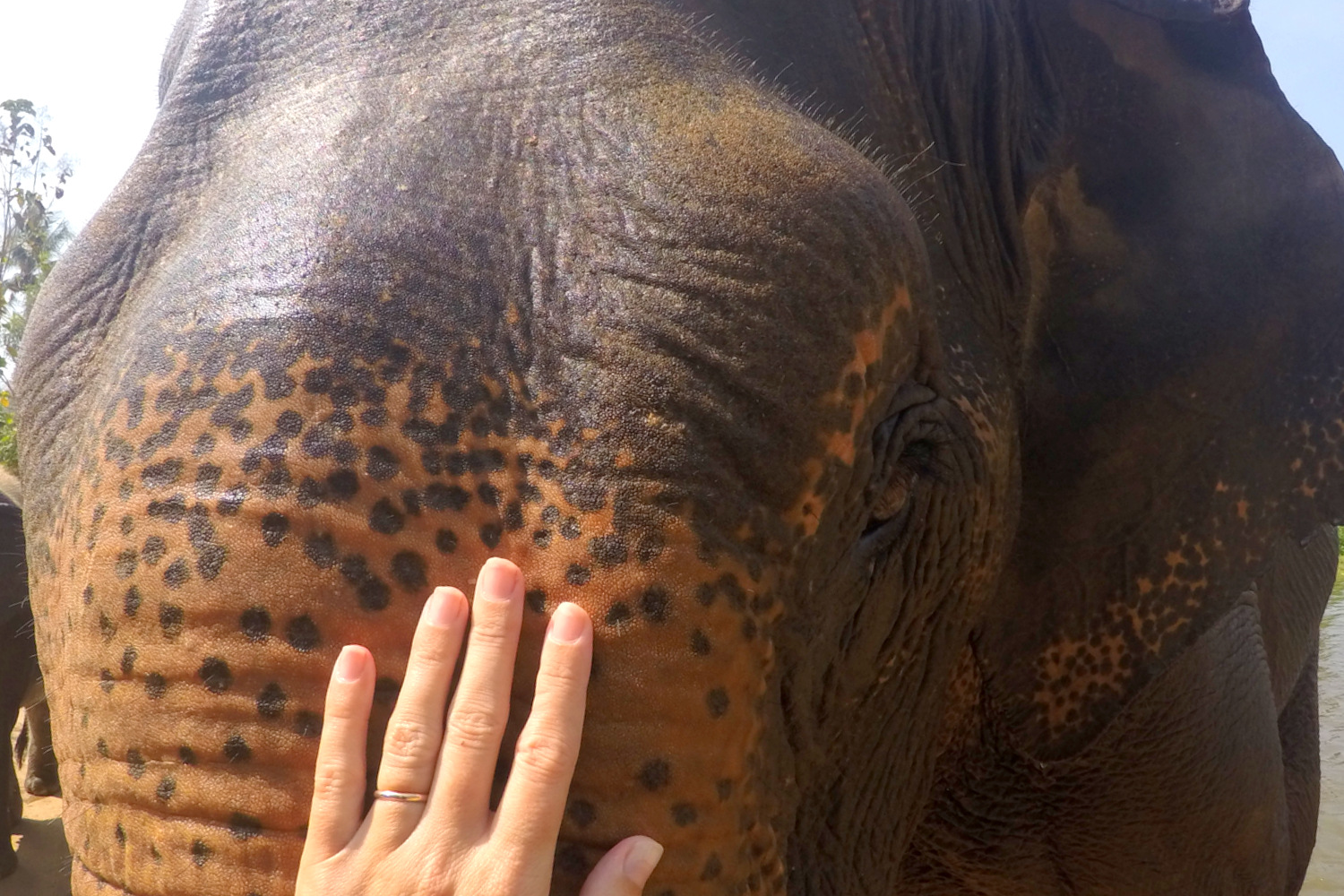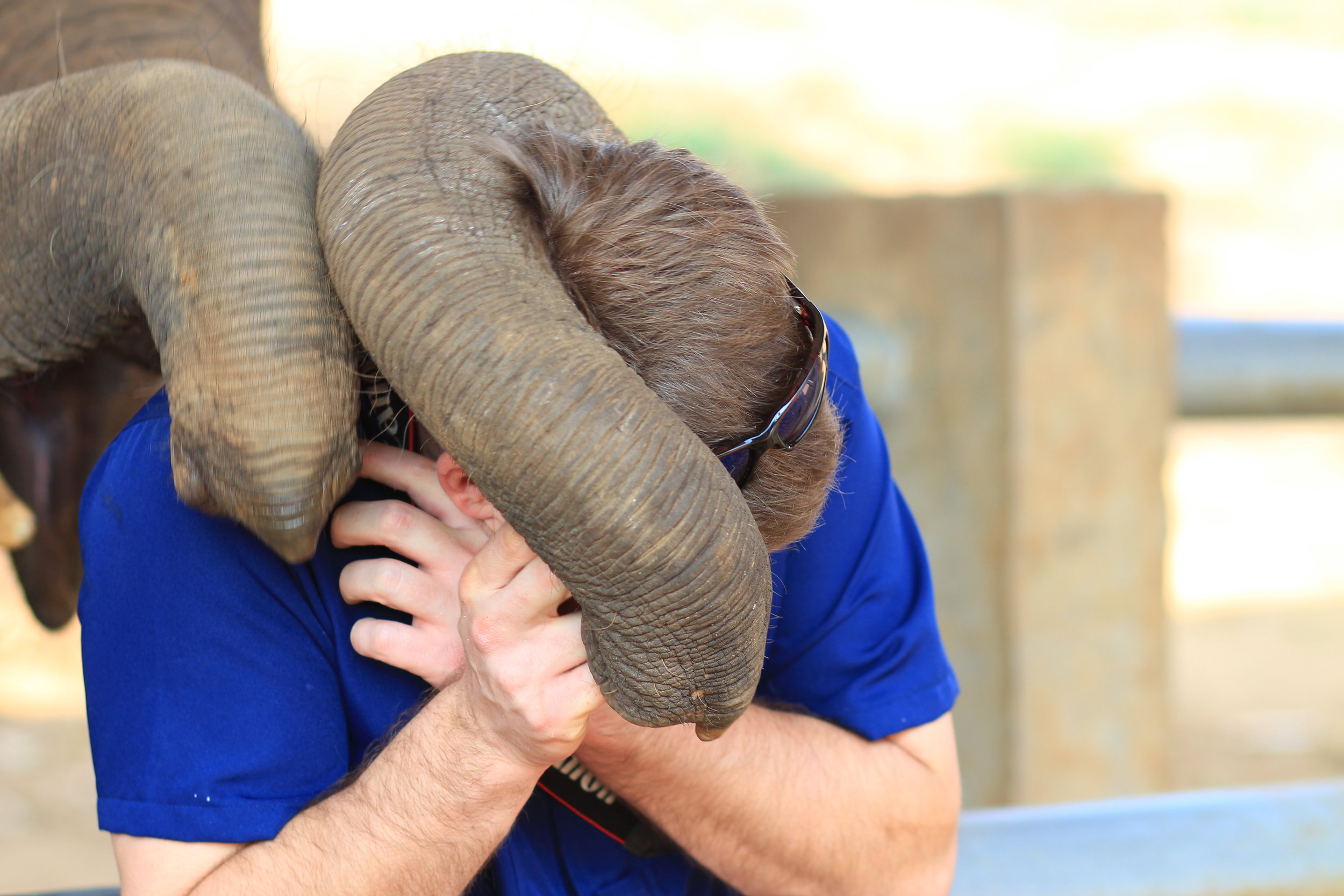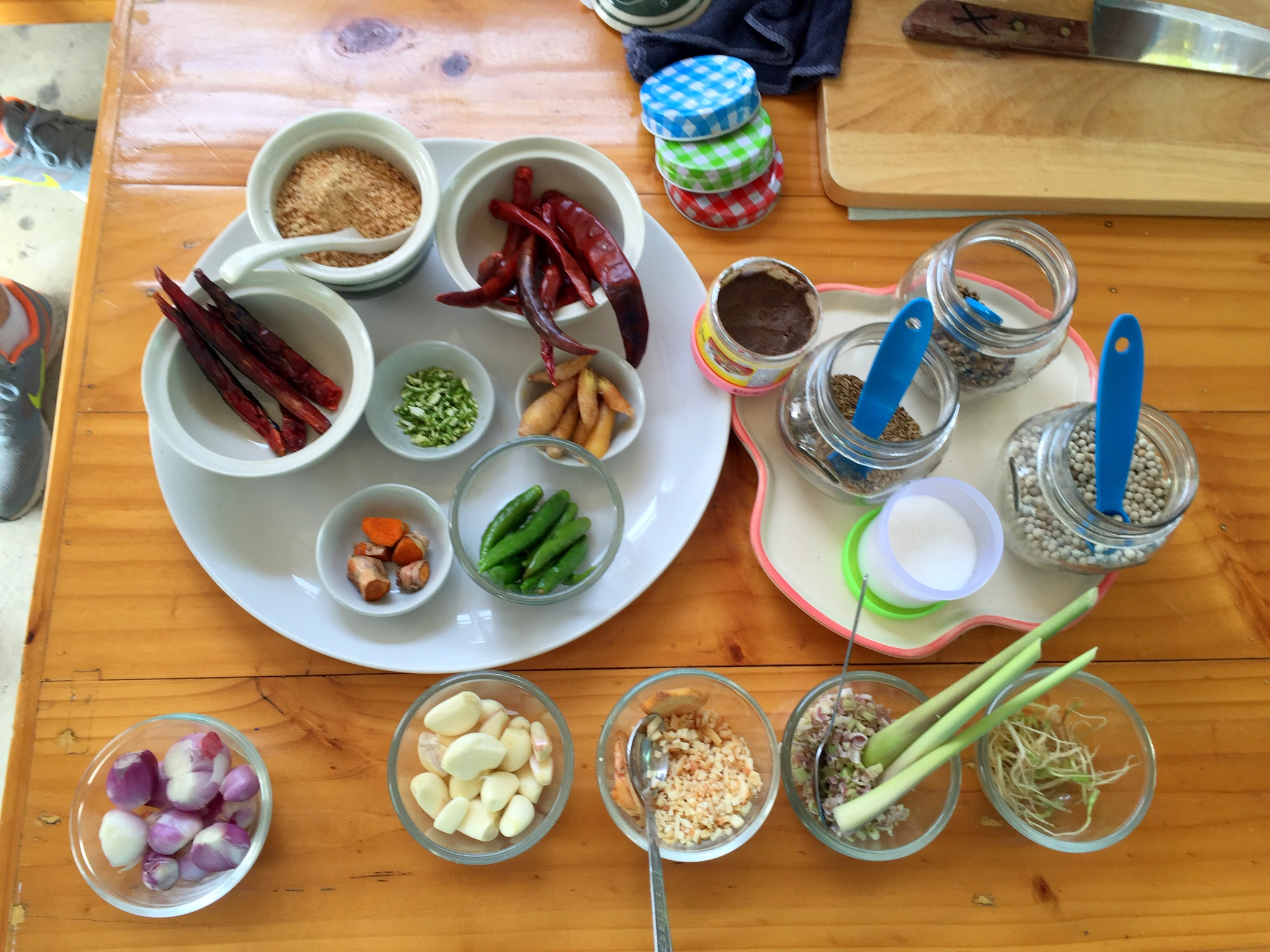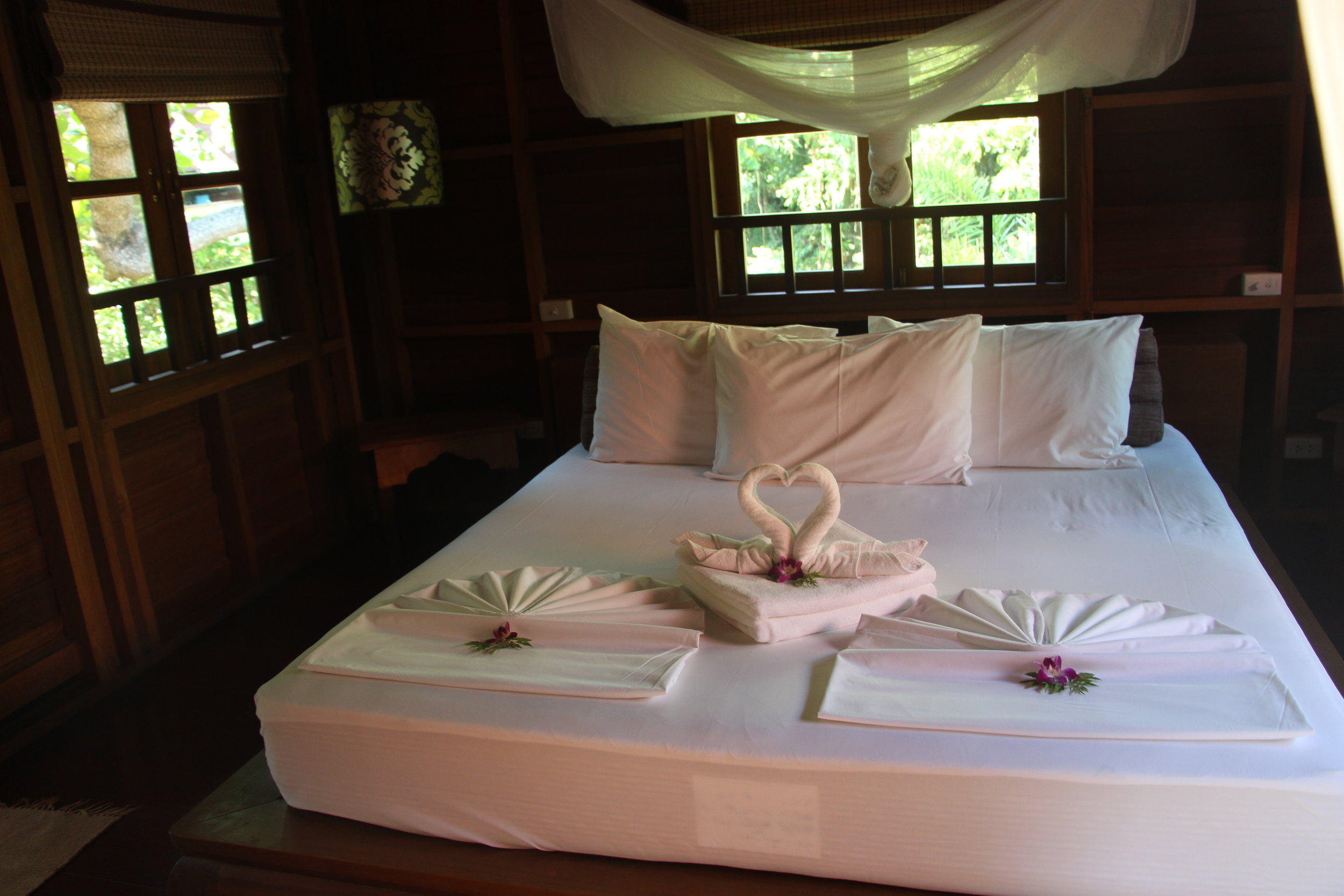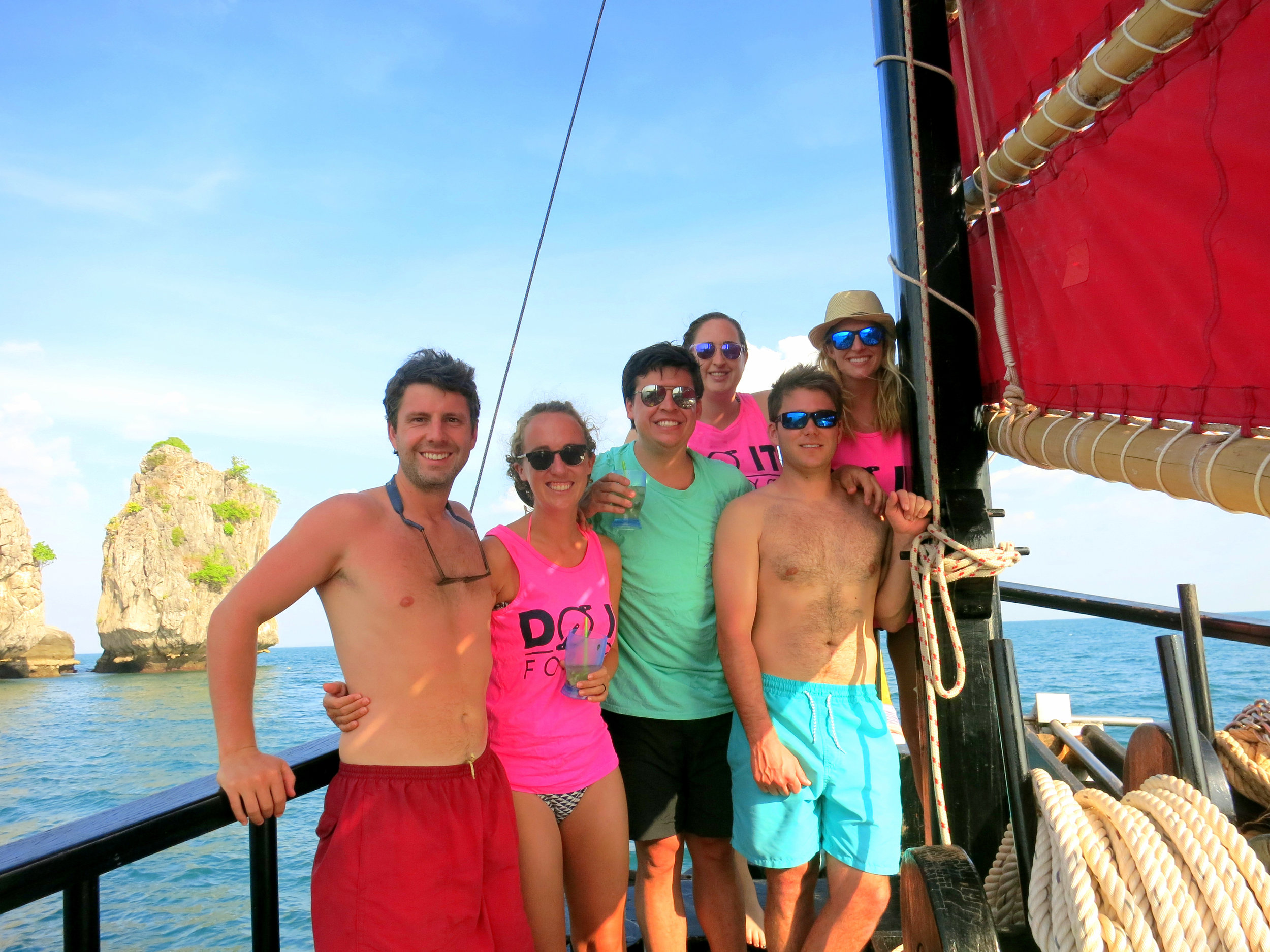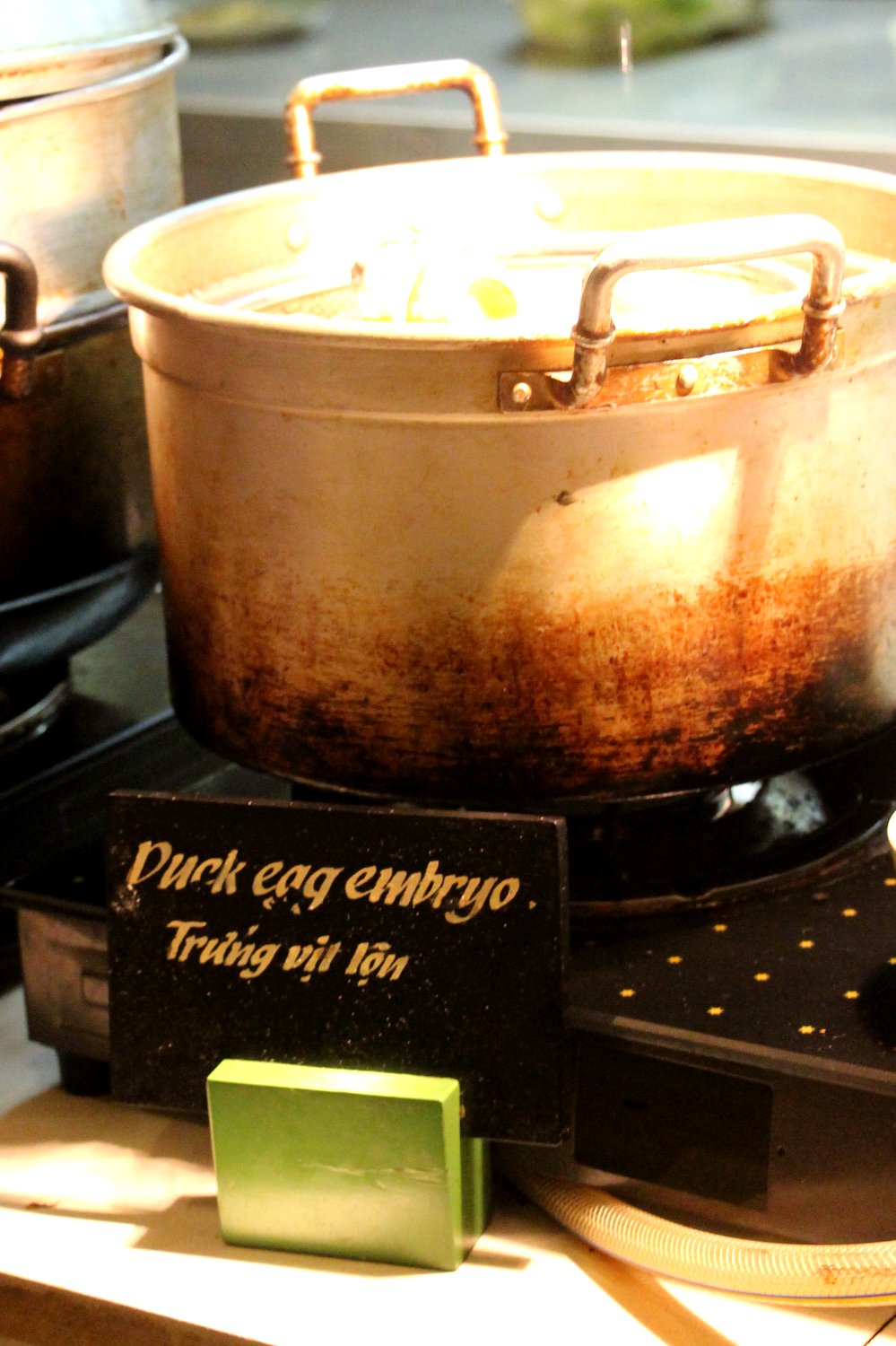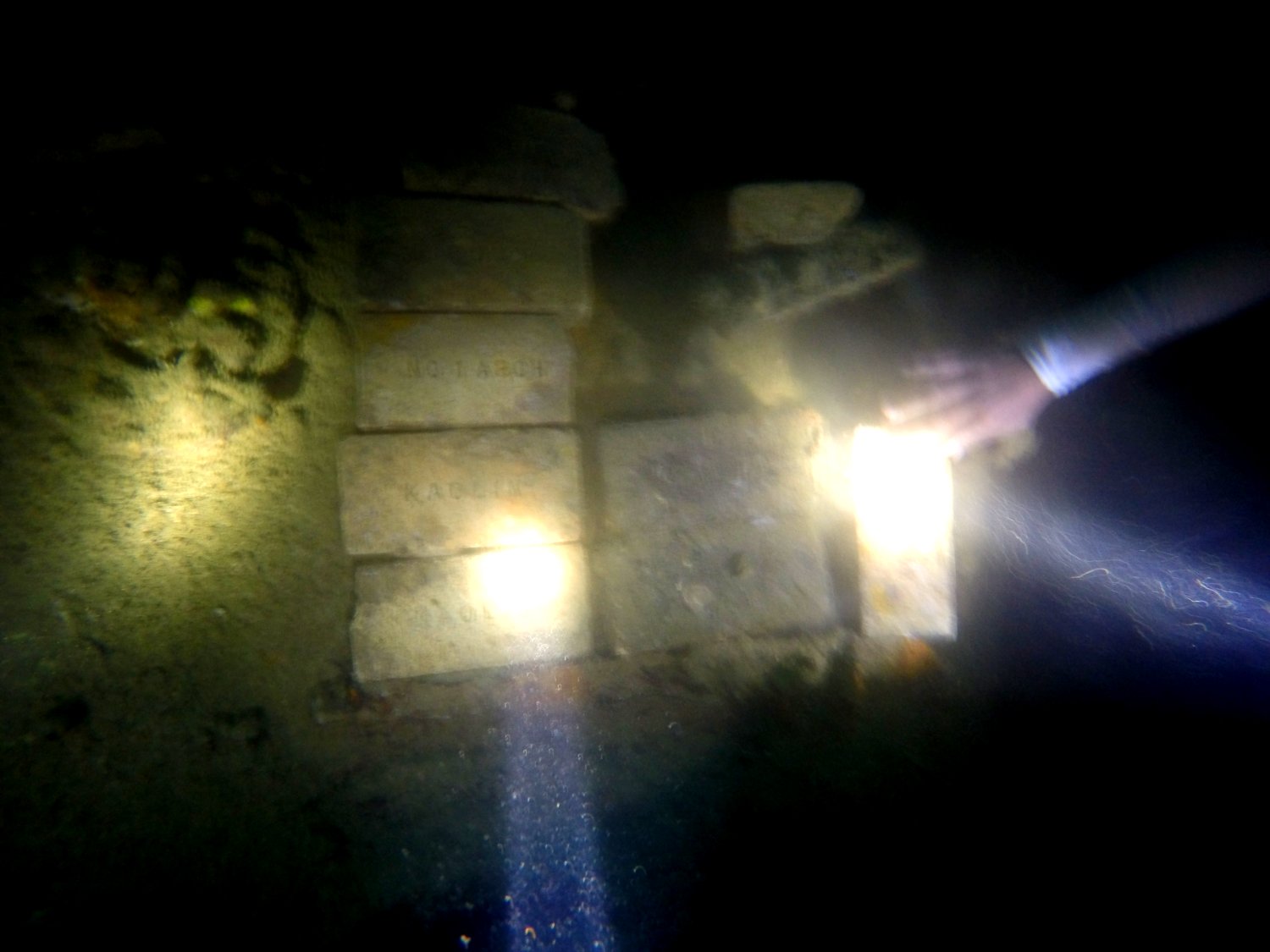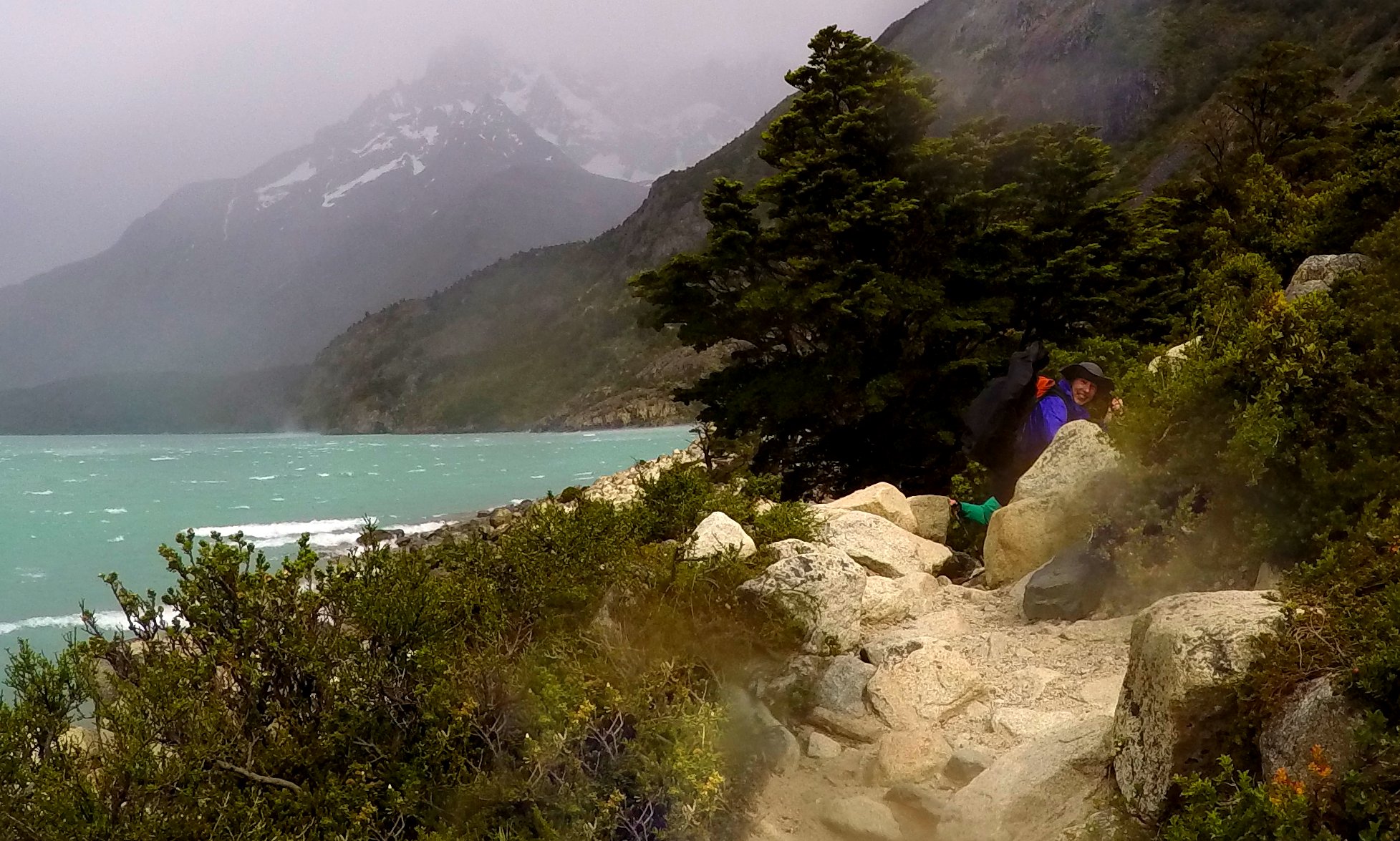Thailand was one of our favorite places on our trip. This wasn’t only because of the spectacular country, but because of the spectacular company-- we were lucky enough that a group of our best friends came to meet us there! They said it was to spend time with us, but we know it was to check that we were still speaking to each other and hadn’t succumbed to too many travel bracelets. Whatever the reason, it was a blast.
Everyone flew into Bangkok, but we didn’t even pause before jetting off to Chang Mai. Ok, we paused for a second so that some of us could get a fish pedicure, but that was it.
Chang Mai is in Northern Thailand, and it holds many of the cultural treasures of the country. It is situated at the foot of gorgeous mountains, and it offers enough activities for two weeks. We had three days.
We started with animal life. The opportunities to fawn over nature in Thailand aren’t limited to watching from a distance. This crazy place let’s you get REALLY close and personal with animals, even scary ones. We headed to Tiger Kingdom and were able to pet (yes PET) the tigers. We tried to pose for photos, but the fear in our eyes says it all.
We next headed to Baan Chang Elephant Park. This park rescues elephants from the horrific conditions, and then lets crazy tourists like us come to take care of them for a day. We got to feed, pet, bathe and ride these magnificent creatures. They are huge, but amazingly gentle and playful. It was an awesome experience.
In Chang Mai we stayed at a beautiful boutique hotel called Duang Champa, a renovated villa that was right in the middle of town. The beautiful white wash walls and colorful decorations were the perfect retreat to the outside chaos.
Speaking of chaos, the Sunday Market was directly outside our door and it was people watching heaven. We were able to pick up gifts for friends back home (and ourselves of course).
No question, one of our favorite activities from Thailand was a fantastic day spent at Benny's Home Cooking School. Benny is an absolute character, and the ideal match for some of the kookier members of our crew. She’s charming, hilarious, and the perfect host to teach us about Thai cooking. We started at the local market, and she steered us through buying tips of the trade. After purchasing our goods (and avoiding the more questionable sections of the market), we headed to her house to pick herbs from her garden and to cook. Our cooking stations were set in the shade beside a beautiful rice field, and if the company and view wasn’t enough, the food we created under her guidance was divine.
Unfortunately we had to leave Chang Mai, but our next destination made the parting worth it. We hopped on a plane and headed south to one of the gorgeous beach destinations Thailand has to offer, Railay Beach. We stayed at one of our favorite places from the trip—Railay Beach Club, where we rented a house that was the perfect cross between the Swiss Family Robinson and Bachelor in Paradise. Our beach house gave us plenty of privacy, while also keeping us close to the action. Also, the island is in the sweet spot of having plenty of amenities for travelers, and not yet being overrun or inauthentic. We hiked, relaxed, and took advantage of the super cheap massages and delicious food the Beach Club provided. Between card games over sunset cocktails and hikes through the gorgeous lagoon, we unwound and fully realized the magic of Thailand.
We couldn’t relax forever, and we said goodbye to Raley beach to travel to its antithesis: Bangkok.
A sprawling city and the industrial heart of Thailand, Bangkok is a beast. The city holds an attraction for everyone, and we tried to hit them all. First, for the tourist, a visit to the famous War Phra Kaew, or the temple of the Emerald Buddha. This is the most sacred temple in Thailand, and the craftsmanship of the structures is magnificent. Be sure your clothes cover your knees and shoulders, as these guys do NOT mess around with their dress code. Though crowded, the colors and detail on these temples is staggering.
You also can’t miss the giant Reclining Buddah in Wat Pho—pictures simply can’t do justice to this 46 meter long and 5.5 ton statue made of solid gold.
If the heat and congestion is too much, a boat tour along Chao Phraya River is exactly what you need to refresh your dusty eyes. Thailand's canals used to be its main form of conveyance and transportation, making it the "Venice of the East."
Lastly, if you’re in Bagkok, you HAVE to go to the Chatuchak market (or JJ Market), in which there are a crazy 15,000+ stalls over 27 acres. It has 27 sections, and holds everything from paintings and antiques, to food and clothes, to ceramics and souvenirs. An absolute don’t miss is the animal section, which has the most bizarre inhabitants imaginable. Lastly, stop by Viva 8 for delicious Paella and people watching.
In Bangkok, we stayed at the highly recommended MUSE hotel. The rooms were spacious, tasteful and with beautiful views. Plus, the rooftop bar and restaurants are some of the best around, which is very convenient in such a sprawling metropolis. The rooftop pool isn’t so bad either! Gorgeous and luxurious, MUSE was the perfect finale.
Of course a trip to Bangkok isn’t complete without enjoying the nightlife, and this group wasn’t going to leave that part unexplored. We started at one of the famous rooftop bars, Moon Bar, which is on top of the fabulous Banyon Tree Hotel. The Bagkok skyline was breathtaking and the sleek white modern atmosphere was just what we needed. Afterwards, we headed to the world renowned Nahm for a Thai meal of which dreams are made. Lastly, we made our way to the very touristy but fun Khaosan road area. It definitely lives up to its nickname “the backpacker ghetto." It was a blast and entertaining, and we certainly don’t mind venturing to the beaten path when the situation calls for it.
Our whirlwind tour through Thailand gave us glimpses into the depth and vast differences that each part of the country offers. The only comfort in leaving is that we’ll have the memories with us forever.



